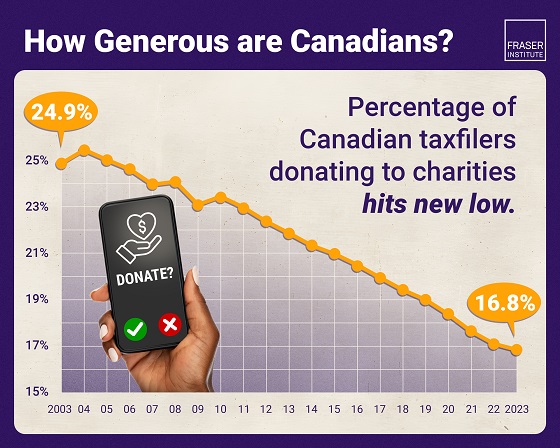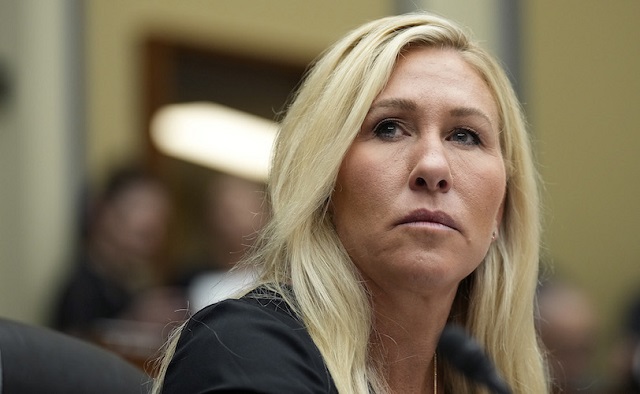News
145 Studio Suites In New RDC Residence

New Residence will benefit RDC’s future students
 Red Deer College leaders, faculty, staff and guests joined Minister of Advanced Education, Marlin Schmidt, for a special announcement detailing the College’s new Residence building.
Red Deer College leaders, faculty, staff and guests joined Minister of Advanced Education, Marlin Schmidt, for a special announcement detailing the College’s new Residence building.
“The new Residence is part of the College’s Land Use Master Plan, and it is an important component for the future growth and development of Red Deer College,” says Morris Flewwelling, RDC Board Chair. “This building has been carefully designed to meet the needs of our learners, which is always at the forefront of our strategic planning.”
“The ability to grow the Red Deer College campus will address the current and future needs of students, support the community and create good construction jobs for Albertans. We are working to make life more affordable for our students and ensure as many Albertans as possible can access post-secondary education,” says Marlin Schmidt, Minister of Advanced Education.
The new Residence, composed of 145 studio suites, is targeted to be complete by early 2019. From February 15 to March 3, 2019, the building will house athletes who are in central Alberta for the 2019 Canada Winter Games. After the Games, RDC students who have short-term educational needs, including Apprenticeship students, will have the opportunity to move in for the remainder of the academic year. In the fall of 2019, students will move into the facility. Throughout its yearly cycle, the Residence will be utilized by students, as well as adult and youth learners attending RDC’s Series Summer Arts School and Summer Camps, and individuals and groups on campus for training and other purposes.
“This new residence will have a positive impact on our students,” says Marian Young, Vice President Operations of the Students’ Association of Red Deer College. “The ability to live in a studio suite will appeal to many students who wish to remain on campus. Additional on-campus housing has long been needed at RDC.”
“A great number of people have been dedicated to the success of this project, as we all recognize how important it will be for RDC’s future and for our learners,” says Joel Ward, President & CEO. “We have designed a Residence that is unique and innovative, and it will serve the needs of our College for decades to come.”
With the new Residence building, the team has incorporated sustainable and energy efficient technologies through the use of vertically installed, electricity-generating solar panels that will cover three sides of the building. By utilizing this technology, the new Residence is another component of RDC’s Alternative Energy Initiative, which promotes environmental stewardship. In addition to reducing RDC’s carbon footprint and decreasing utility costs, the unique installation of panels will allow students to learn about solar generation, as data from the new Residence building will be gathered and assessed by learners in the Alternative Energy Lab.
“We’re taking important steps forward in the future of our College, and we’re considering our students and communities, as well as programs, facilities and stewardship – all of the essential components that position our institution for success,” says Ward. “The new Residence is another part of this, and we are very proud to create a building that students can learn in and learn from as they enjoy College life. The building will be beautiful and functional, and it will position RDC as one of the leaders across Canada when it comes to integrating solar panels into the design and cladding of a residence facility.”
Daily Caller
Bari Weiss Reportedly Planning To Blow Up Legacy Media Giant


From the Daily Caller News Foundation
CBS News editor-in-chief Bari Weiss is reportedly planning to dramatically change the network’s coverage to eliminate left-wing bias and make the newsroom more efficient.
Weiss has been handed a mandate for change by Paramount SkyDance’s David Ellison, the CEO of CBS News’ parent company, which bought her company, The Free Press, for $150 million, according to The Wall Street Journal (WSJ). Ellison wants Weiss to bring “news that reflects reality” and journalism that “doesn’t seek to demonize, but seeks to understand.”
“I wanna blow things up,” Weiss has reportedly told her colleagues during meetings.
During the hiring process, Weiss has reached out to outside talent directly rather than speaking to their agents, which is considered the traditional method of communication, according to the WSJ. She has also reportedly been highly involved in booking guests in an attempt to fix the network’s ratings and make a lasting change.
Weiss is focused on trying to reshape “CBS Evening News,” which has consistently ranked third place in comparison to the evening programs on ABC News and NBC News. “CBS Evening News” typically averages around 4 million total viewers. On the week of November 3, the program garnered 4.2 million total viewers and 564,000 viewers in the 25 to 54 key demographic, while “NBC Nightly News” and “ABC World News Tonight” averaged 7.2 million and 6.6 million total viewers, as well as 929,000 and 883,000 in the 25-54 demo, according to AdWeek.
John Dickerson, who currently hosts “CBS Evening News,” announced on Oct. 27 that he will be departing the network in January. Weiss has reportedly considered poaching CNN’s Anderson Cooper and Fox News’ Bret Baier, though Baier said he will remain at Fox News in the short-term since his contract goes through the end of 2028, according to the WSJ.
A source close to Cooper told the WSJ that the CNN host is not interested in hosting “CBS Evening News.”
“CBS Mornings” host Gayle King’s contract is up in early 2026, prompting Weiss to reportedly consider finding a cheaper alternative to her $15 million salary, according to WSJ.
The median age of viewers who watch CBS News is 58 years old, according to a Pew Research survey.
When she stepped into her role, Weiss sent emails to staff asking them to outline their jobs and provide feedback on “how we can make CBS News the most trusted news organization in America and the world.” Weiss said she would have had to “throw in the towel a very, very long time ago” if she were concerned about the negative press her decisions will receive.
Approximately 100 staffers were laid off once Weiss took over in October, which were part of Paramount’s layoffs of about 1,000 employees. The CBS News Race and Culture Unit, founded in July 2020, was completely wiped out as part of the layoffs.
Media
Breaking News: the public actually expects journalists to determine the truth of statements they report

CBC’s David Cochrane explaining to viewers how the CBC is blameless for accurately reporting a statement later determined to be false
Who knew? Plus! Online smartassery by reporters continues to curse the industry, Vancouver loves Harry Potter (shhhh!), layoffs continue and newspaper revenue now in uncontrolled descent
Journalists just love sensational political accusations and way too many of them are more than happy to spread them far and wide while shrugging aside their first obligation, the truth.
Why they put so much faith in the honesty of politicians, who have a history of being a bit, shall we say, truthy, is quite beyond me, but reporters often seem more interested in it being true something salacious was said than they are whether the scandalous thing that was said is true.
To help save journalism from bad journalism please subscribe to The Rewrite.
A fine example of this behaviour, which continues to undermine public trust in journalism, unfolded a week ago. That was when freshly-minted Liberal MP and Tory turncoat Chris d’Entremont told the CBC’s Catherine Cullen that, after publicly musing about crossing the floor, “Conservative House leader Andrew Scheer and party whip Chris Warkentin “barged” into his office, pushed open the door — almost knocking down his assistant — and yelled at him about “how much of a snake” he was.”
The Conservatives, in response, issued a statement accusing d’Entremont of telling barefaced lies and described a much calmer scenario. CBC then issued a correction after d’Entremont “clarified” an embellishment but some journalists were happy to ignore that and stick with repeating the original, more salacious version.
Stu Benson of The Hill Times enthusiastically Tweeted that ““[D’Entremont] says Conservative House leader Andrew Scheer and party whip Chris Warkentin ‘barged’ into his office, pushed his assistant aside and yelled at him about ‘how much of a snake’ he was.”
National Newswatch, despite CBC’s correction still had a Tweet up days later stating “Pushing, yelling from Conservative leadership ‘sealed the deal’ on defection: d’Entremont. MP says Conservatives felt like ‘part of a frat house rather than a serious political party.”
Ignoring the correction and “clarification,” CBC’s Power & Politics used the clip of d’Entremont’s self-confessed embellishment and repeated what both he and the CBC knew not to be true. To be fair, the segment that can be found here fully details the Conservatives’ response but, according to one of the CBC’s most diligent critics, no on air correction has been made. Instead, host David Cochrane went out of his way to point out that while his editors had used the term “correction,” the CBC was blameless for reporting d’Entremont’s admittedly false representation of the event.
The pattern of behaviour indicates to the public that news organizations do not take their obligation to the truth seriously. The public actually expects journalists to seek to establish the truth of statements they are reporting before they report them.
Edmonton City News reporter Sean Amato meanwhile managed to take foolish online smartassery to a new level when, repeating the Liberals’ Trump = Tories theme, he posted:
“Quite the press conference from (Conservative Leader) Pierre Poilievre in Calgary today. Basically…the Liberals suck, the media sucks and a lot of other stuff in Canada sucks. Hey, it worked for Trump.”
Tens of thousands of views and (at time of writing) more than 500 comments later, he replied with renewed smug smartassery:
“Never thought a tweet that says “the Liberals suck, the media sucks” would anger so many Conservatives. But here we are  .”
.”
Here we are, indeed. Amato appears to have set a new personal best for comments in response to one of his Tweets while simultaneously embedding the impression that not only he but all journalists are biased against Conservatives. And, I ask, for what? And why?
Maybe think before you Tweet or, better yet, just shut up. Many good journalists find that works just fine.
Amato, though, seems determined to prioritize personal commentary over journalism. When he recently got some pushback on lack of objectivity, his response was unrepentant.
“Bonnie…mute me, follow people you like, no hard feelings. But let me be free too. Cheers!”
Liberation awaits.
The “controversial” Harry Potter Forbidden Forest experience opened 10 days ago in Vancouver, weeks after the parks board, cowed by trans activists, vowed such an event would never happen again.
The distress of the “Qmunity” over the connection to J.K. Rowling and her vocal insistence on a traditional definition of women was well documented in the weeks leading up to the event. But there was nary a peep from CTV, CBC or Global News when organizers announced on media day that the pre-sales were the largest they had experienced anywhere in the world.
I found coverage in The Daily Hive and in Black Press papers in British Columbia. But it wasn’t until Remembrance Day that one of the city’s legacy media, the Vancouver Sun, delivered a review of any kind. CBC, CTV and Global News appear to be boycotting.
To help save journalism from bad journalism please subscribe to The Rewrite.
Operating revenue for Canada’s publishers continues to plummet – an indication the nation’s newspapers are increasingly unable to deliver the readers needed to provide results to advertisers.
Statscan reported a decline of a whopping 17.9 per cent since 2022, which compares with a drop of 7.3 percent from 2020-2022.
News Media Canada lobbyist Paul Deegan, meanwhile, confessed to a House of Commons committee that operators “cannot make a buck as a digital-only publisher,” have failed to transition their business models and still need revenue from print.
Profit margins, according to Statscan, are down to 3.2 per cent.
Postmedia, meanwhile, is later than usual in posting its annual report but has a little under another two weeks to do so.
Last week, The Rewrite noted how an extra $150 million from the government for the CBC would be bad news for everyone else in the business. This week, Groupe TVA announced it was eliminating 87 positions and laid the blame squarely at Prime Minister Mark Carney’s door.
“Repeated appeals to government authorities to support the private television industry, at a time when it faces fierce competition from the web giants and CBC/Radio-Canada, have been ignored,” a company statement explained.
Poilievre, who has been the focus lately of much of the press inclined to favour the Liberals, tried to shame media into paying some attention to dissent from the likes of Beaches-East York MP Nate Erskine-Smith within Liberal ranks.
It was left to the Toronto Star’s Althia Raj to gently explain to his Deputy Leader, Melissa Lantsman, why dissent within Liberal ranks is not a story because, unlike dissent with Conservative ranks, it’s in the best interests of the country.
“Nate has normalized independent thought so it isn’t new/s,” she wrote. “IMO it would be nice to see this from other MPs. Those outside of cabinet, their job is to hold the govt to account. More independent thought means better reports, better debate, better policy. Better social cohesion too.”
Take that, you silly Tories!  The narrative is entrenched.
The narrative is entrenched.
Some of you will remember how last fall, CTV News terminated two employees following the doctoring of Poilievre’s quotes in a fashion not too dissimilar to that used by the producers of a Panorama documentary at the BBC. Two of the BBC’s senior executives walked the plank there when it was revealed its team had intentionally misrepresented a speech by US President Donald Trump, who then threatened to sue the organization for $1 billion.
Well, one of those fired CTV employees, Derek Thacker, is back on the list of approved Parliamentary Press Gallery members as an employee of Global News.
Don’t forget to check out this week’s Full Press podcast and, if you haven’t done so yet, click at least one of the Subscribe, Share or Donate buttons provided.

(Peter Menzies is a commentator and consultant on media, Macdonald-Laurier Institute Senior Fellow, a past publisher of the Calgary Herald, a former vice chair of the CRTC and a National Newspaper Award winner.)
To help save journalism from bad journalism please subscribe to The Rewrite.
For the full experience, upgrade your subscription.
-

 COVID-192 days ago
COVID-192 days agoTrump DOJ seeks to quash Pfizer whistleblower’s lawsuit over COVID shots
-

 Crime2 days ago
Crime2 days agoU.S. seizes Cuba-bound ship with illicit Iranian oil history
-

 Business1 day ago
Business1 day agoAlbertans give most on average but Canadian generosity hits lowest point in 20 years
-

 International2 days ago
International2 days agoMarjorie Taylor Greene’s ’60 Minutes’ interview reveals power struggle between populists and RINOs
-

 Censorship Industrial Complex1 day ago
Censorship Industrial Complex1 day agoOttawa’s New Hate Law Goes Too Far
-

 Bruce Dowbiggin1 day ago
Bruce Dowbiggin1 day agoCarney Hears A Who: Here Comes The Grinch
-

 National1 day ago
National1 day agoCanada’s free speech record is cracking under pressure
-

 Fraser Institute17 hours ago
Fraser Institute17 hours agoClaims about ‘unmarked graves’ don’t withstand scrutiny








